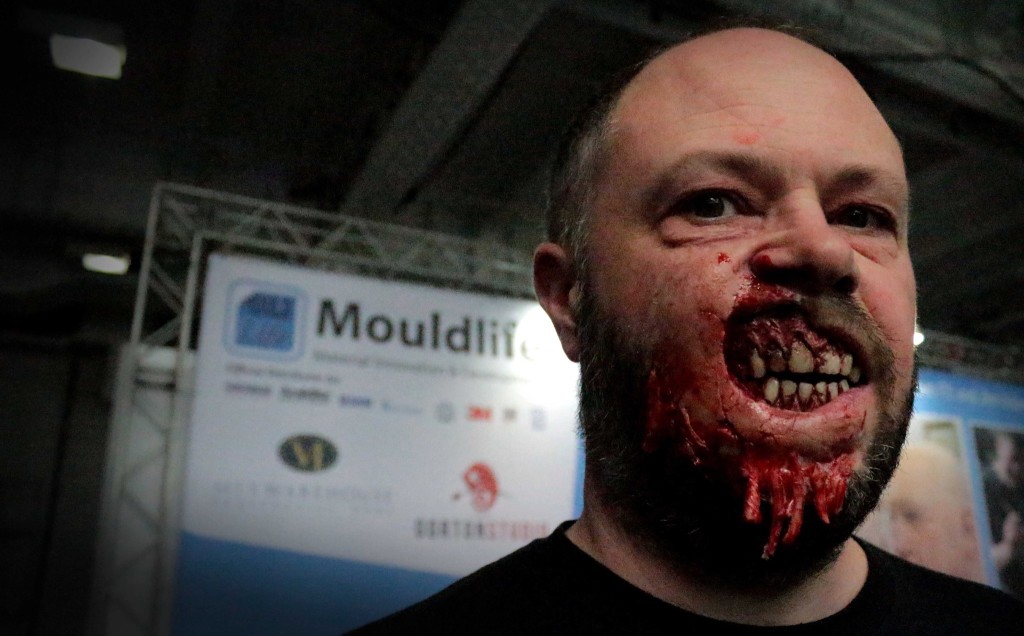IMATS 2013 was a blast!
I had a lot of fun doing demos on the Mouldlife stand, but especially enjoyed my first talk at the International Makeup Artists Trade Show.
There are always lots of great demos at IMATS, and I wanted to do something different but also something which pretty much anyone can try. After all, it is great to show someone what a month of working in a fully kitted out workshop can achieve when you know the ropes, but often that ends up being just eye candy and FX voyeurism if you can’t then put any of that into action.

The very patient Darren Grassby made these excellent dentures and I stuck one of the pieces made using the techniques used in the presentation.
The piece was made with Plat Sil Gel 10, deadened to 150%. I used Baldies as the barrier, and applied it with Snappy G silicone adhesive.
It was coloured using the Bluebird palettes.
So, I decided to put together a presentation showing how you can create some cool shapes and textures using processes rather than skills. In the presentation, I demonstrated how many textures can be created or harvested from things which are easily obtained. Then, by moulding and casting them with a little creativity, you can take aspects of them and turn them into interesting appliances.
Incidentally, this doesn’t involve throwing a bag of clay down the stairs and hoping it will arrive at the bottom as the perfect head-sculpt. No, skill is never wasted and I am not trying to pretend otherwise. If you can sculpt, then you can certainly modify and add to these.
Even if you have never picked up a loop tool in your life, it is nice to know you can still create some interesting textures quite easily.
Besides, if you need to create a cracked skin effect all over the body, a healed burn covering an entire back or a body smothered with smallpox – it is kind of nice to know you could get something on set for tomorrow if you know how.
Adding a little randomness, and allowing happy accidents to occur can create some interesting shapes. I know it feels good to be ‘responsible’ for every single mark, line and facet of the surface but just allowing some random elements can remove the unintentional patterns or regularities which people can put into their otherwise natural effects.
Sometimes, you can get in the way of what you are trying to create. At the very least, causing shapes to occur, and then examining them at leisure can give you some good insight into how they were created.
These techniques are just a few of the ideas I had, and once you have see how it works, you’ll no doubt be getting ideas for all kinds of things which can be used to create new appliance ideas.
If you do, be sure to send me a picture of what you do. I have already heard from several people who are looking at Savoy Cabbages with their veiny leaves in ways that they didn’t previously.
Thanks for checking, and please be sure to comment or ask questions if your interest is piqued!
Stuart
——————————-
Oh, and until Friday 28th June, there will be a discount coupon for the Awesome Latex Ecourse.
To use it, just scroll to the bottom of the Ecourse Homepage and enter the code IMATS2013 to get a the ecourse for just £20.13 (normally £45).


Pingback: Shooting Guns At Meat (Or How Todd Spent Last Weekend) |